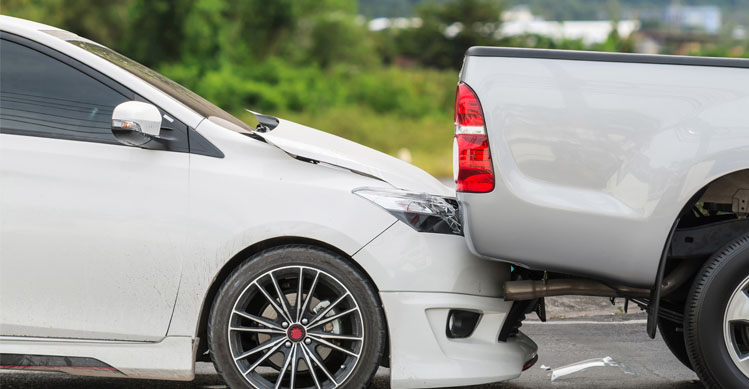The best way to save on vehicle costs is to follow some basic tips to keep your car out of the garage and on the road. You don’t need to buy overalls and a socket set to do these simple maintenance checks.
1. Your owner’s manual
This is a book that typically rests and gathers dust in the glove compartment. Pull it out, have a read – there’s a world of car care tips waiting for you. You might even learn stuff you didn’t know your car could do!
The purpose of the manual is to identify the things you can and should do yourself, and the warning signals for tasks requiring professional help. Cars today have sophisticated warning systems, but they’re only good if you know what they’re saying. We’ve all seen a car bonnet belching steam on the side of the road. Well that little red light that’s been flashing for the last 50 kilometres has been trying to tell us something. Knowing the warning signals will help you avoid expensive repairs.
Your manual tells you when the next service is due and it’s really important to stick to the recommended service milestones. When it’s time to sell, it’s a major plus to have a service record showing your car has been serviced in line with the manufacturer’s recommendations.
2. Tyres
Every two weeks, check your tyre pressures. If you don’t already have one, get a simple tyre pressure gauge - you can pick one up for cheap at a range of different shops. Keeping your tyre pressure in line with your manual’s recommendation will save on tyre wear, help fuel efficiency and save you money.
Check the tread depth. The law requires you to have a minimum of 1.5mm of tread depth throughout a continuous band in the centre ¾ of the tyre and around the entire circumference of the tyre. Too hard? Most good tyre shops will check your tread for no charge. Also rotate your tyres every 10,000 kilometres, so they wear evenly and last longer.
3. Engine oil
Oil’s the lifeblood of your car’s engine. It keeps your engine’s moving parts from wearing too quickly. The rule is to check oil levels every two weeks and definitely before a long trip. There are two things to look for. Is there enough oil and does the oil look healthy. Light brown to dark red’s good. Black means change your oil.
Park your car on a level surface. With most cars, the engine should be cold so you don’t burn yourself (consult your manual, because some manufacturers do recommend checking the oil when the engine’s warm).
Find the dipstick (usually coloured, so it’s easy to find) and pull it all the way out. Wipe the oil off the dipstick using a rag or paper towel. You’ll see there are markings labelled H (high) and L (low). Reinsert the dipstick, making sure it’s seated all the way in and then remove it. The oil level should be somewhere between the H and the L. If the level is closer to or below the L mark, you need to add oil. Get the manual out and make sure you add the correct grade of oil. There should be a cap (often marked ‘Filler’). Remove the cap and pour oil into the filler using a funnel. Wait a few minutes and then repeatedly test the oil level using the dipstick until the oil level is at or slightly above the middle mark on the dipstick. Make sure you don’t overfill. Screw the filler cap back on and the job’s good.
4. Check coolant level
Moving engine parts get really hot and need cooling to avoid seizing. If this happens, you need really deep pockets to get back on the road. Somewhere under the bonnet there’s a transparent engine coolant reservoir. It will be marked with both high and low levels. Check the coolant is somewhere between the H and L marking and top up if necessary. Check your manual for the correct coolant.
5. Windscreen wipers
Replace wiper blades once a year to prevent smearing. A tip here is to put some methylated spirits on a rag and wipe along the edge of your wipers once a month. The meths will get rid of any contaminants that can accumulate on the wiper blade.
Did you know that by law you must have a working screen wash system? Keep the windscreen washer reservoir topped up and add a good windscreen washer fluid that’ll deal to those annoying insect splatters.
6. Lights
It’s hard to know when an indicator light’s not working or a brake light bulb’s blown. Check all your lights once a week. Your safety is important so don’t delay getting lights fixed.
7. Battery
Not all batteries need water, so check whether your battery is maintenance free. You can check this by reading your car’s manual. If it’s not maintenance free, you need to regularly check the water level in each of your battery cells. Book your car in regularly to see an auto electrician - they'll be able to check over your battery to make sure it's in the best working order.
If you're planning a road trip or extended holiday, place your battery on charge before you go to help extend it's life.
8. Power steering
Check the hydraulic fluid level once a month and top up with the fluid recommended in your manual.
9. Fuel
Use only the fuel octane rating recommended in your car’s manual. If you use the wrong fuel it can cause significant damage to your engine and potentially void any warranty claim.
Most New Zealand cars are designed and tuned to use 91 octane; if this applies to your car, just use 91. There’s no benefit in using a higher octane fuel than recommended. In fact, your fuel bill will increase for no significant gain in performance.
10. Bodywork
If you’re into washing your car yourself, rather than using the local car wash, you’ll easily pick up on any signs of paint damage or rust. There are some great products available that’ll keep your car looking great. Check out your local auto-parts store and take the expert’s advice. You’ll pay extra for the better products but they’re worth it.
By the way, bird droppings and insects contain chemicals that will corrode your paint work if you don’t remove them!
These tips are pretty straightforward, but if you’re in doubt there’s plenty of expert advice out there or have a chat to the mechanic who usually services your car.
Bonus Tip - Insurance
- Do it online - Get a quote and buy, lodge a claim or manage your insurance online with My State, your online account.
You may also like...
-
 February 2022Driving Blog | State Insurance
February 2022Driving Blog | State InsuranceTop 10 Suburbs for Collisions
-
 August 2020Driving Blog | State Insurance
August 2020Driving Blog | State InsuranceProtecting Your Ride
-
 August 2020Driving Blog | State Insurance
August 2020Driving Blog | State InsuranceGetting Your Car Ready for a Summer Road Trip
